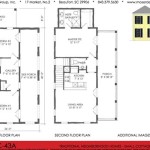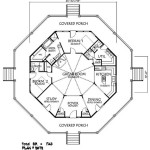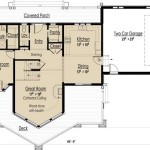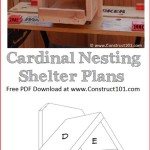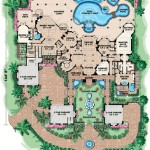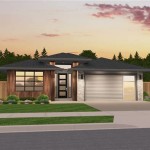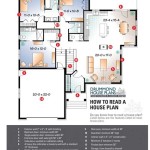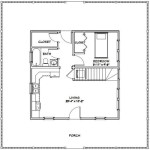Lake house plans offer detailed instructions and blueprints for constructing a residential dwelling specifically designed for lakeside living. These plans encompass the unique architectural considerations and requirements associated with lakeshore properties, ensuring a harmonious integration with the surrounding environment.
Lake house plans cater to a wide range of architectural styles and personal preferences, providing flexible options for creating a customized and functional lakeside retreat. From rustic cabins to luxurious waterfront mansions, these plans empower homeowners to realize their dream of owning a home that seamlessly blends indoor and outdoor living while capitalizing on the tranquility and scenic beauty of the lakefront.
When planning a lake house, it’s essential to consider specific design elements to ensure a harmonious and functional living space.
- Maximize natural light
- Incorporate outdoor living spaces
- Consider energy efficiency
- Choose durable materials
- Plan for ample storage
- Design for accessibility
- Think about future expansion
- Consider resale value
- Hire a qualified architect
By incorporating these key points into your lake house plans, you can create a beautiful and comfortable home that meets your specific needs and enhances your lakeside living experience.
Maximize natural light
Incorporating ample natural light into your lake house design is crucial for creating a bright and inviting living space. Large windows and skylights not only flood the interior with natural light, reducing the need for artificial lighting, but also provide stunning views of the surrounding lake and landscape.
- Place windows strategically: Position windows to capture the maximum amount of natural light throughout the day. Consider the orientation of the house and the sun’s path to determine the optimal placement of windows.
- Use large windows: Larger windows allow more natural light to enter the home. Consider floor-to-ceiling windows or expansive picture windows to maximize the views and create a seamless connection to the outdoors.
- Incorporate skylights: Skylights strategically placed in the roof can provide additional natural light to areas that may not have access to windows, such as hallways, bathrooms, and closets.
- Choose light-colored interiors: Light-colored walls, ceilings, and flooring reflect natural light more effectively, making the interior feel brighter and more spacious.
By maximizing natural light in your lake house, you can create a more comfortable and inviting living environment while reducing energy consumption and enhancing your connection to the surrounding nature.
Incorporate outdoor living spaces
Creating seamless indoor-outdoor transitions is a key element of lake house living. By incorporating dedicated outdoor living spaces into your lake house plans, you can extend your living areas beyond the walls of the house and fully embrace the beauty of the lakeside environment.
- Decks and patios: Decks and patios provide a versatile outdoor living space for dining, entertaining, or simply relaxing while enjoying the lake views. They can be designed with built-in seating, fire pits, and outdoor kitchens to enhance functionality and comfort.
- Screened porches: Screened porches offer a protected outdoor space that shields you from insects and allows you to enjoy the outdoors without the worry of pests. They can be furnished with comfortable seating and dining areas, creating an extension of your indoor living space.
- Lakeside gazebos and pergolas: Gazebos and pergolas provide a shaded and sheltered area near the lake’s edge, perfect for relaxing, reading, or taking in the scenery. They can be designed with built-in benches or seating areas and can also be used for outdoor dining or entertaining.
- Fire pits and outdoor fireplaces: Fire pits and outdoor fireplaces create a cozy and inviting atmosphere for evening gatherings or late-night stargazing. They can be incorporated into decks, patios, or lakeside areas to extend the enjoyment of the outdoors into the cooler months.
By incorporating these outdoor living spaces into your lake house plans, you can create a seamless connection to the natural surroundings, enhance your living experience, and maximize the enjoyment of your lakeside property.
Consider energy efficiency
Incorporating energy-efficient features into your lake house plans is crucial for reducing your environmental impact and lowering your energy bills. By implementing sustainable design principles, you can create a lake house that is both comfortable and cost-effective to operate.
- Insulate effectively: Proper insulation is key to maintaining a comfortable indoor temperature while reducing energy consumption. Use high-quality insulation in the walls, roof, and floors to minimize heat loss and gain.
- Install energy-efficient windows and doors: Windows and doors are major sources of heat loss in a home. Choose energy-efficient models with double or triple glazing, low-E coatings, and tight seals to reduce air leakage and improve insulation.
- Use energy-efficient appliances: Look for Energy Star-rated appliances, which meet strict energy efficiency standards set by the U.S. Environmental Protection Agency (EPA). These appliances consume less energy, resulting in lower utility bills and a reduced carbon footprint.
- Consider renewable energy sources: Explore renewable energy options such as solar panels or geothermal heating and cooling systems to generate your own clean energy and further reduce your reliance on fossil fuels.
By incorporating these energy-efficient practices into your lake house plans, you can create a sustainable and comfortable living space that minimizes your environmental impact and lowers your energy costs.
Choose durable materials
When selecting materials for your lake house, durability is paramount. The constant exposure to moisture, fluctuating temperatures, and potential for insects and pests requires materials that can withstand these challenges and maintain their integrity over time.
- Exterior cladding: Opt for exterior cladding materials such as fiber cement siding, vinyl siding, or metal roofing. These materials are resistant to moisture, insects, and fire, ensuring the longevity of your lake house’s exterior.
- Decking materials: Choose decking materials that are resistant to rot, moisture, and insects. Composite decking, made from a combination of wood and plastic, or pressure-treated lumber are excellent options for lake houses.
- Windows and doors: Select windows and doors made from durable materials such as aluminum or fiberglass. These materials are resistant to moisture, corrosion, and warping, ensuring the longevity and energy efficiency of your lake house.
- Interior finishes: For interior finishes, choose materials that can withstand moisture and humidity. Tile or vinyl flooring is a good option for areas prone to moisture, while moisture-resistant drywall is recommended for walls and ceilings.
By choosing durable materials for your lake house, you can ensure the longevity and resilience of your property, reducing maintenance costs and enhancing its overall value.
Plan for ample storage
Lake houses often accumulate a variety of seasonal gear, water toys, and other items that require ample storage space. By incorporating smart storage solutions into your lake house plans, you can maintain a clutter-free and organized living space.
- Maximize vertical space: Utilize vertical space by installing tall shelves, cabinets, and drawers. This is particularly useful in smaller lake houses where floor space is limited.
- Incorporate built-in storage: Built-in storage, such as window seats with storage compartments or benches with built-in drawers, provides additional storage without taking up valuable floor space.
- Utilize outdoor storage: Outdoor storage sheds or garages can house larger items like kayaks, paddleboards, and lawn equipment, freeing up indoor space for everyday items.
- Consider a mudroom: A dedicated mudroom near the entrance of the lake house provides a convenient space to store wet or dirty gear, such as boots, coats, and life jackets.
By planning for ample storage, you can ensure that your lake house remains organized and clutter-free, allowing you to fully enjoy your lakeside living experience.
Design for accessibility
Lake houses should be designed with accessibility in mind to ensure that everyone can comfortably enjoy the space, regardless of their physical abilities.
- Wide doorways and hallways: Ensure that doorways and hallways are wide enough to accommodate wheelchairs and other mobility aids. A standard width of 36 inches is recommended.
- Ramps and no-step entrances: Incorporate ramps or no-step entrances to eliminate barriers for individuals with mobility impairments. Ramps should have a gentle slope and non-slip surfaces.
- Accessible bathrooms: Design bathrooms with accessible features such as grab bars, roll-in showers, and raised toilets. These features provide support and safety for individuals with limited mobility.
- Universal design principles: Apply universal design principles throughout the lake house to create a space that is usable by people of all abilities. This includes features such as lever handles, adjustable countertops, and accessible light switches.
By incorporating these accessibility features into your lake house plans, you can create a welcoming and inclusive space that allows everyone to fully enjoy the lakefront living experience.
Think about future expansion
When planning your lake house, consider your future needs and the possibility of expanding the space in the future. Incorporating flexibility into your design will allow you to adapt your lake house to changing circumstances, such as a growing family or evolving lifestyle.
- Design with a modular approach: Create a flexible floor plan that can be easily modified or expanded in the future. This may involve designing the house in sections or modules that can be added on as needed.
- Consider multi-purpose spaces: Design rooms that can serve multiple functions, allowing you to adapt the space to your changing needs. For example, a loft area could be used as a guest room or a playroom, or a basement could be finished to provide additional living space.
- Plan for future additions: Leave space on the property for potential additions, such as a detached garage, guest house, or screened porch. Ensure that the utilities and infrastructure can support future expansion.
- Choose a scalable design: Select a design that can be easily scaled up or down to meet your future needs. This may involve choosing a plan that can be expanded by adding additional stories or wings.
By thinking ahead and incorporating flexibility into your lake house plans, you can create a space that will grow and adapt along with your needs, ensuring that your lake house remains a cherished retreat for years to come.
Consider resale value
When planning your lake house, it’s important to consider its potential resale value. By incorporating features that enhance the property’s appeal to future buyers, you can protect your investment and ensure a higher return if you decide to sell in the future.
- Location, location, location: The location of your lake house is paramount. Choose a property with good access to the lake, stunning views, and proximity to amenities and activities. A desirable location can significantly increase the resale value of your lake house.
- Well-maintained and updated: A well-maintained and updated lake house is more attractive to potential buyers and commands a higher price. Regularly maintain the property, including the exterior, interior, and landscaping. Consider periodic updates to keep the house modern and stylish.
- Functional and flexible floor plan: Design your lake house with a functional and flexible floor plan that appeals to a wide range of buyers. Consider open concept living areas, multiple bedrooms and bathrooms, and outdoor living spaces. A well-designed floor plan enhances the livability and desirability of your lake house.
- High-quality materials and finishes: Use high-quality materials and finishes throughout your lake house to create a durable and aesthetically pleasing space. Invest in features such as hardwood floors, granite countertops, and energy-efficient appliances. These upgrades will increase the perceived value of your home and make it more appealing to potential buyers.
By considering resale value during the planning stages, you can create a lake house that is not only a cherished retreat but also a valuable investment for the future.
Hire a qualified architect
Engaging a qualified architect is crucial for ensuring the success of your lake house project. An experienced architect will guide you through the entire design and construction process, ensuring that your lake house meets your specific needs, adheres to building codes and regulations, and maximizes the potential of your lakeside property.
- Expertise and experience: A qualified architect possesses specialized knowledge and experience in lake house design. They understand the unique challenges and opportunities associated with lakeside living and can provide valuable insights and innovative solutions.
- Design excellence: Architects are trained to create aesthetically pleasing and functional designs that optimize space, light, and views. They can help you achieve your vision for a lake house that seamlessly blends with the natural surroundings and enhances your indoor-outdoor living experience.
- Technical expertise: Architects have a deep understanding of building codes, zoning regulations, and construction techniques. They ensure that your lake house is designed and built to the highest standards of safety, durability, and energy efficiency.
- Project management: Architects can provide comprehensive project management services, overseeing the entire design and construction process. They coordinate with contractors, subcontractors, and engineers to ensure that the project is completed on time, within budget, and to your satisfaction.
Investing in the services of a qualified architect is essential for creating a lake house that meets your unique needs, maximizes the potential of your lakeside property, and provides a lifetime of enjoyment.










Related Posts

